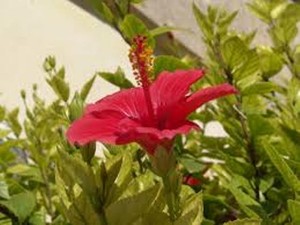25 Nov Mon 2013
PART 2 OF POISONOUS PLANTS THROUGHTOUT THE UNITED STATES
Here is PART 2 of a list of POISONOUS PLANTS throughout the UNITED STATES for those open minded people who do not really believe that all herbs are for human or even animal consumption, and can comprehend the fact that many herbs are poisonous.
I'm not going to go into the description of these plants, you can usually get a good colored picture with descriptions from other books and online.However, many books and often online informationdo not even state if the plant is poisonous or not.So, I'm going to go through as many plants that I can find and think of and just give the common names of the plants, the Latin names, other plants that may be related, where they are most apt to grow and the dangerous part of the plant and symptoms of poisoning.
YOU MAY EMAIL ME FOR A PDF FORMAT AND I WILL GLADLY SEND IT TO YOU.
THIS IS PART 2
DEADLY NIGHTSHADEATROPA BELLADONNA OR ATROPA BELLA-DONNAA/K/ABelladonna.The name Atropa belladonna is in the nightshade family (Solanaceae), which it shares with potatoes, tomatoes, eggplants, jimsonweed, tobacco, wolfberry, and chili peppers. The common names for this species include belladonna, deadly nightshade, divale, dwale,banewort, devil's berries, naughty man's cherries, death cherries, beautiful death, devil's herb, great morel, and dwayberry.
MOST LIKELY TO BE SEEN GROWING:It is naturalized in parts of North America, where it is often found in shady, moist locations with limestone-rich soils
DANGER:The foliage and berries are extremely toxic, Contains alkaloids hyoscyamine, atropine, and hyoscine. Properties are sedative, narcotic, and act on the central nervous system. Small doses stimulate and large doses paralyze. Belladonna poisoning manifests within 15 minutes of ingestion. Belladonna is one of the most toxic plants found in the Eastern Hemisphere.All parts of the plant contain tropane alkaloids.The berries pose the greatest danger to children because they look attractive and can be mistaken for blueberries and have a somewhat sweet taste.The consumption of two to five berries by a human adult is probably lethal. The root of the plant is generally the most toxic part, though this can vary from one specimen to another.Ingestion of a single leaf of the plant can be fatal to an adult. The plant's deadly symptoms are caused by atropine's disruption of the parasympathetic nervous system's ability to regulate involuntary activities, such as sweating, breathing, and heart rate. The antidote for belladonna poisoning is physostigmine or pilocarpine, the same as for atropine.
The SYMPTOMS of belladonna poisoning include dilated pupils, sensitivity to light, blurred vision, tachycardia, loss of balance, staggering, headache, rash, flushing, severely dry mouth and throat, slurred speech, urinary retention, constipation, confusion, hallucinations, delirium, and convulsions
.
DEATH CAMAS (ZIGADENUS VENENOSUS/ZIGADENUE GRAMINEUS RYDB.)MOST LIKELY TO BE SEEN GROWINGDeath camas occurs in some parts of western North America and can be easily confused with edible onions of genus Allium. They tend to grow in dry meadows and on dry hillsides as well as sagebrush slopes and mountain forests. The bulbs of Death Camas are oval and look like onions but does not smell like onions
DANGER All parts of this plant with lovely flowers called the Death Camas are poisonous. It is dangerous for humans as well as livestock, though some poisoned by it have been treated.
FOXGLOVEDIGITALIS PURPUREA (SCROPHULARIACEAE)
MOST LIKELY TO BE SEEN GROWING: Foxgloves are commonly cultivated as ornamentals in North America.Also in North America in open lands, roadsides and waste areas. Often abundant in clearings and after burning in light dry soils.
DANGER:Foxglove has caused serious poisonings, and anti-digoxin Fab fragments are not particularly effective in treating foxglove poisoning. Most cases of toxicity have been caused by wild-food gatherers mistaking the plant for comfrey. Poisoning can result from eating any part of the plant or any material or drug derived from it. It contains about a dozen different cardiac glycosides
SYMPTOMS of digitalis poisoning include vomiting, diarrhea, stomachache, headache, bradycardia, atrioventricular heart block,irregular heartbeat and pulse, tremors, confusion, and visual disturbances, convulsions, and death
GOLDEN DEWDROP(Duranta repens L)MOST LIKELY TO BE SEEN GROWINGin the open in southern Florida and sometimes cultivated elsewhere in green houses. Native to West Indies, South America and Key West.
DANGER and SYMPTOMSthe fruit contain a saponin-type poison which induces sleepiness, fever and convulsions.
Hemlock poisoning may refer to poisoning by either POISON HEMLOCK (CONIUM MACULATUM) OR WATER HEMLOCK FAMILY (CICUTA SPECIES AND OENANTHE CROCATA L.) Although related, poison hemlock and water hemlock toxicity have different pathophysiologies and clinical presentations. The root contains the greatest concentration of toxin in both species, although all plant parts are toxic
Poison hemlock, an exotic species introduced to the United States, is a ubiquitous plant with fernlike properties that may reach a height of 2 meters. Poison hemlock grows in diverse settings, including wooded areas, ditches, and waysides throughout the United States, and may be mistaken for other plants such as fool's parsley
Water hemlockis typically found growing in moist habitats, such as drainage ditches, marshes, and near bodies of fresh water.
Poison hemlockcontains several piperidine alkaloid toxins (namely coniine) that are structurally similar to nicotine.
Water hemlockcontains cicutoxin, a potent, noncompetitive gamma-aminobutyric acid (GABA) receptor antagonist
SYMPTOMS FOR :POISON HEMLOCKmay include the following: Nausea and vomiting,abdominal pain,tachycardia,tremor,seizures (much more common with water hemlock) ,bradycardia (late),ascending paralysis (late), Coma,respiratory failure
SYMPTOMS FOR WATER HEMLOCK:Nausea and vomiting,excessive salivation, abdominal pain, tachy/bradycardia,hypotension/hypertension,cardiac dysrhythmias/failure/arrest, delirium,convulsions, opisthotonus, hemiballismus, seizure (status epilepticus)
From the bookDANGEROUS PLANTSBYJOHNTAMPION
101 Medicinal Herbsby Steven Foster
The Honest Herbal by Varro E Tyler
Dr. James Duke, formerly chief of the U.S. Department of Agriculture's Medicinal Plant Resources Laboratory
The 'PDR for Herbal Medicines'
Natural Standard Professional Monograph, Copyright © 2013 (www.naturalstandard.com).
Contributor Information and Disclosures Author Daniel E Brooks, MDCo-Medical Director, Banner Good Samaritan Poison and Drug Information Center, Department of Medical Toxicology, Banner Good Samaritan Medical Center

